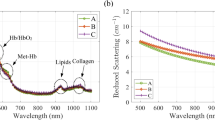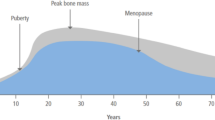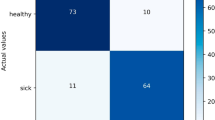Abstract
THE quantitative studies of Dallemagne and Mélon1 on the optical properties of ox bone (already described in part in Nature2), and their deductions concerning the relations between the organic and the inorganic fractions of the bone, have led me to a series of analogous, independent researches on human bone.
This is a preview of subscription content, access via your institution
Access options
Subscribe to this journal
Receive 51 print issues and online access
$199.00 per year
only $3.90 per issue
Buy this article
- Purchase on SpringerLink
- Instant access to full article PDF
Prices may be subject to local taxes which are calculated during checkout
Similar content being viewed by others
References
Dallemagne, M. J., and Mélon, J., Bull. Soc. Roy. Sci., Liége, 12, 558 607 (1943); 13, 254 (1944); Bull. Soc. Chim. Biol., 27, 85 (1945) J. Washington Acad. Sci., 33, 181 (1946).
"Biochemistry in Belgium", Nature, 159, 617 (1947).
Schmidt, W. J., Ber. Oberhess. Ges. Natur- u. Heilk., 15 (1932–33) Naturw. Abt. Giessen, 219 (1933).
Wiener, O., Abt. sächs. Ges. Wiss., math. phys. Kl., 32, 509 (1912).
Author information
Authors and Affiliations
Rights and permissions
About this article
Cite this article
ANTONIO, A. Quantitative Researches on the Optical Properties of Human Bone. Nature 163, 604 (1949). https://doi.org/10.1038/163604a0
Issue date:
DOI: https://doi.org/10.1038/163604a0
This article is cited by
-
Die mechanische Reaktion der Haversschen Systeme und ihrer Lamellen auf experimentelle Belastung (nebst Bemerkungen zur Histogenese des lamell�ren Knochengewebes)
Wilhelm Roux' Archiv f�r Entwicklungsmechanik der Organismen (1954)



